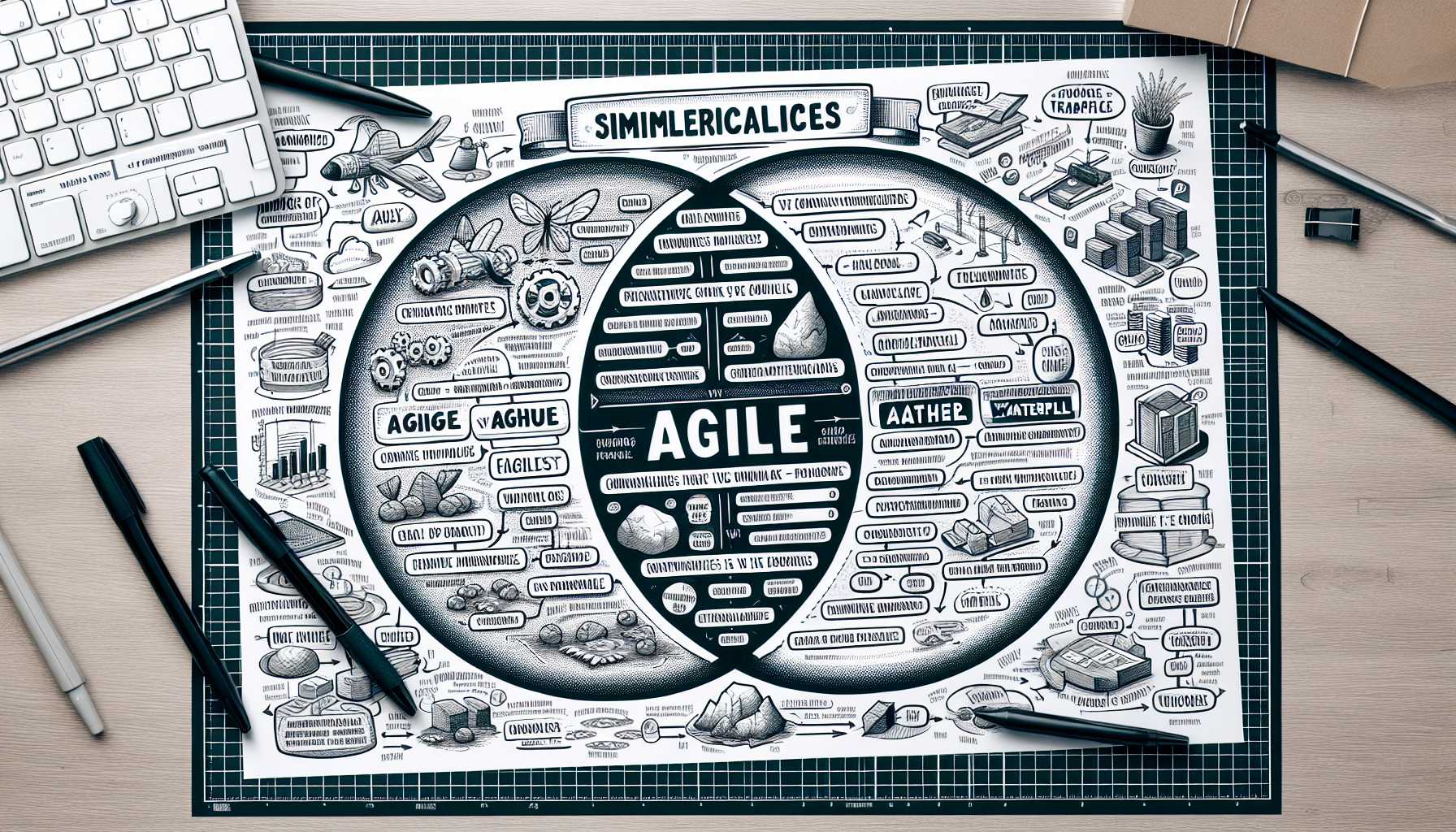Welcome back to our product management deep dive. Seasoned product managers understand that choosing the right project management methodology can make or break the success of a product. Through my extensive experience within the tech industry, I’ve witnessed firsthand the stark differences between Agile and Waterfall methodologies and their impact on product development. Today, I’m sharing my insights on these methodologies, with real-world examples and product frameworks.

Understanding the Waterfall Methodology
In the Waterfall model, product development flows sequentially from conception to maintenance, like a waterfall cascading down cliffs. It’s a linear approach where each phase must be completed before moving on to the next.
The Phases of Waterfall:
- Requirements: Detailing out what the product must do.
- Design: Architecting the product.
- Implementation: Building the product.
- Verification: Testing and finding bugs.
- Maintenance: Ongoing support and updates.
In my earlier days, I recall using the Waterfall approach for a complex financial software product with regulatory requirements. Our specifications needed to be thoroughly documented up front for compliance. Waterfall provided the structure necessary to meet those regulations without the risk of scope change that could jeopardize the project’s regulatory approval.
Strengths of Waterfall:
- Simple and Easy to Understand: Perfect for newcomers and for projects with clear requirements and outcome.
- Structured: Works well in regulated environments or where documentation is critical.
- Sequential: Facilitates rigorous testing and quality assurance.
Weaknesses of Waterfall:
- Rigidity: Leaves little room for change or iteration based on feedback.
- Risk of Misalignment: The final product could be out of sync with current market needs by the time of release.
- Delayed Feedback Loop: Stakeholders only see the product late in the development cycle.
Delving into Agile Methodology
Agile methodology, on the other hand, is iterative and incremental. It emphasizes flexibility and customer feedback, dividing work into small chunks known as ‘sprints.’ Product teams regularly reassess and adjust their plans as they go along.
Components of Agile:
- Sprints: Time-boxed intervals for work, usually a few weeks long.
- Stand-ups: Daily meetings to discuss progress and roadblocks.
- Retrospectives: Sessions after each sprint to consider what went well and what didn’t.
- Backlog: A prioritized list of features and tasks to work on.
I recall transitioning to the Agile methodology during the development of a mobile application. The tech landscape was rapidly evolving, and requirements changed frequently. Agile allowed our team to adapt quickly. We released updates in cycles, ensuring our product evolved with customer needs and kept ahead of the competition.
Strengths of Agile:
- Flexibility: Able to pivot and adapt to changes rapidly.
- Customer-Centric: Constant feedback loops with stakeholders ensure the product is aligned with user needs.
- Continuous Improvement: Frequent retrospectives lead to process enhancements.
Weaknesses of Agile:
- Less Predictability: It’s harder to predict final outcomes since the process is more dynamic.
- Requires More Customer Involvement: Not all stakeholders have the time or inclination to participate regularly.
- Can be Chaotic: Without proper controls, Agile can lead to scope creep or loss of direction.
Choosing the Right Methodology
So how do you choose between Agile and Waterfall? From my experience, it boils down to understanding the nature of your product, your team’s capabilities, and the market environment.
If your product must meet specific regulatory requirements, or you’re working on a project with very well-understood and fixed parameters, Waterfall might be the way to go. On the flip side, if you’re in a fast-moving industry where customer needs are constantly shifting, Agile could be more suitable.
Hybrid Approach: Best of Both Worlds?
In some scenarios, neither Agile nor Waterfall in their pure forms are perfect fits. There have been several instances where I’ve adopted a hybrid approach, incorporating the structured phases of Waterfall and the iterative feedback mechanisms of Agile. This approach can provide a balance of predictability and flexibility.
Final Thoughts
Your choice between Agile and Waterfall can have significant implications for your product’s success. It’s essential to weigh the pros and cons carefully. Remember, methodologies are a means to an end—they should serve your product strategy, not dictate it.
Have you experienced the Agile vs. Waterfall debate in your own work? Share your stories and feel free to discuss—the learning never stops in the world of product management.
